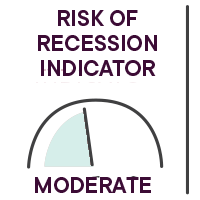Yann Furic
B.B.A., M. Sc., CFA®
Senior Portfolio Manager, Asset Allocation and Alternative Strategies
What moved the markets:
No change in the Bank of Canada or Fed policy rates.
Canadian economy slowing, but not in recession.
Continued growth of the U.S. economy.
Record levels on the U.S. market, driven by the theme of artificial intelligence.

|
OVERVIEW OF GLOBAL EQUITY MARKETS |
||||
|
Country |
Index |
Return |
Change |
Year-to-date |
|
Canada |
S&P/TSX |
1.82% |
|
2.38% |
|
United States |
S&P 500 |
6.94% |
|
10.18% |
|
|
Nasdaq |
7.83% |
|
10.40% |
|
International stock markets |
EAFE |
3.38% |
|
5.35% |
|
Emerging markets |
|
6.35% |
|
2.75% |
|
China |
MSCI China |
10.04% |
|
-0.33% |
* All percentages are in Canadian dollars. Source: Morningstar Direct.
Results – Canadian bonds
The FTSE Canada Universe Bond Index, which includes Canadian government and corporate bonds, has posted a negative return of 1.71% year to date (at February 29, 2024).
Source : Morningstar Direct.
Our analysis of events

Strong stock market performance
- Equity markets have posted attractive returns since the start of the year: 10.1% for the S&P 500, 10.4% for the MSCI Japan, 5.3% for international markets (MSCI EAFE), 2.4% for the S&P/TSX Composite, and 2.7% for emerging markets (all returns in Canadian dollars).
- U.S. corporate results for the 4th quarter of 2023 beat expectations, particularly in the case of NVIDIA, which benefited from investor enthusiasm for the theme of artificial intelligence.
- The U.S. Federal Reserve (Fed) held its key rate steady at the end of January and suggested that a rate cut in March was no longer part of its baseline scenario. Rate cuts could come later, probably in mid-2024. In an address to the U.S. Congress on March 7, Fed Chairman Jerome Powell suggested that a rate cut could be expected in the near future.
- The Bank of Canada (BoC) maintained its key rate at its current level of 5% at its March 5 meeting.
- The European Central Bank (ECB) will likely start cutting rates late in first half of the year, possibly in June.
- In terms of market expectations for rate cuts, the market is pricing in a first cut in Canada during the summer months of June and July, followed by three or four additional 0.25% cuts in 2024. In the U.S., cuts are expected to begin in June 2024 and total more than 1% by year end. In Europe, the market is anticipating a first rate reduction in June, with further cuts totalling 1% by December 2024.
- The announcement of an annual inflation rate of 2.9% in Canada for January is good news for the markets, and a significant decline from the previous month. In the United States, the annual inflation rate fell to 3.1% in January from 3.4% in December. However, it was higher than market expectations, which were for a decline to 2.9%.
Some possible scenarios
- The most positive scenario would be a reduction in rates due solely to a decline in inflation, with no pronounced economic slowdown.
- Should the U.S. economy remain strong, the Fed could implement fewer rate cuts than expected by the market. This decision would have a negative impact on the Canadian dollar if the Bank of Canada has to cut its rates to avoid a reduction in household spending during the wave of mortgage renewals in 2025-2026.
- Alternatively, rates could be cut to revive an economy facing a severe recession.
- Finally, we could see re-accelerating inflation while the economic situation deteriorates. This state of stagflation would be the most negative scenario.
- The markets will therefore continue to react to inflation and expect rate cuts late in the first half.
Other economic considerations
Lower rates would also be good news for small and medium-sized businesses, which could then find financing more easily and participate in the economic recovery.
Economic data seem to be pointing to a slowdown, with rate hikes working their way through the economy and gradually reducing consumption of non-essential goods and services.
Employment situation
In Canada, the unemployment rate reached 5.8% in February, up from 5.7% the previous month and in line with market expectations. 40,700 jobs were created in February, most of them full-time (+70,600), while part-time jobs declined (-29,900). Wage inflation fell from 5.3% to 4.9% over a one-year period. Nevertheless, the Bank of Canada still considers this rate too high based on its expectations. Canada’s high level of immigration is one of the drivers of this persistent wage inflation. Despite strong job creation, the unemployment rate is also rising.
The latest U.S. employment numbers came as a surprise: they were up once again, with 275,000 jobs created versus forecasts of 200,000. However, the revised data for the last two months offset some of these gains. The unemployment rate rose from 3.7% to 3.9%. Annual wage growth remains too high at 4.3%, but is down from the previous month.
Economic indicators
Global Purchasing Managers’ Index ![]()
Indicators in the manufacturing segment continue to improve, with 15 of the 30 countries posting an index reading above 50, signalling an expansion. In services, growth continues, but remains weak in Europe, with France and Germany contracting.
Inflation rate ![]()
The inflation rate is still too high, but certain indicators are moving in the right direction. Wage inflation in Canada is still too strong.
Benchmark rates in Canada, Europe and the United States ![]()
Interest rates appear to be stagnating at a level that could have a significant impact on household and business spending when loans come up for renewal. This situation will further dampen household consumption and investment, particularly in Canada, where a large number of 5-year mortgages will mature within the next 24 months.

Our strategic monitoring
We are monitoring inflation as well as the leading indicators for manufacturing production, the services sector and employment. A deterioration in these numbers would prompt us to be even more cautious.
A notable improvement in the manufacturing indices and a return to an inflation rate of 2% would be strong signs of an economic recovery, but above all of a possible soft landing for the economy.
Caution and risk management remain our priorities.
Our tactical approach
In February, we made significant changes to the Tactical Asset Allocation Fund.
In fixed income, we reduced our exposure to Canadian government bonds and invested in Canadian and U.S. benchmark bond indexes. We also took a position in U.S. high-yield bonds and in Canadian and U.S. corporate credit.
For the equity component, we sold our Canadian holdings and increased our holdings of U.S. and foreign stocks.
In the United States, we maintained our position in large cap growth stocks, which react positively to stabilizing interest rates, as well as in stocks with a track record of dividend growth which are more defensive.
We increased our position in small cap stocks, which react well to rate cuts.
We maintained our overweight position in Japan vis-à-vis Europe, as the Japanese economic outlook seems brighter to us.
We also took a position in emerging markets.
We continue to favour stocks in developed countries and focus on risk management.
To learn how our funds performed:
View the returns
Main risks
- An overly restrictive monetary policy could cause a major recession or other problems, like the U.S. regional bank crisis.
- High interest rates for an extended period would reduce corporate profits and sharply curtail household spending.
- The possibility of an episode of stagflation, i.e. anemic economic growth and high inflation, persists. This situation is negative for stock markets.
- The Israeli-Palestinian conflict could escalate and spread throughout the Middle East.
- The conflict in Ukraine could spread to other European countries.
- There is also a risk that tensions could worsen between China and the United States over Taiwan.
Senior Manager, Asset Allocation and Alternative Strategies
Data source : Bloomberg
The opinions expressed here and on the next page do not necessarily represent the views of Professionals’ Financial. The information contained herein has been obtained from sources deemed reliable, but we do not guarantee the accuracy of this information, and it may be incomplete. The opinions expressed are based upon our analysis and interpretation of this information and are not to be construed as a recommendation. Please consult your Wealth Management Advisor.




















